
Annual Review of Materials Research
Scope & Guideline
Fostering Excellence in Materials Science
Introduction
Aims and Scopes
- Materials Characterization and Analysis:
The journal covers advanced techniques in materials characterization, including microscopy, spectroscopy, and computational methods, to provide insights into the structure-property relationships of materials. - Energy Storage and Conversion Materials:
A significant focus is placed on materials for energy applications, particularly in the development and optimization of batteries, fuel cells, and other energy storage systems, highlighting innovations in material design and performance. - Sustainable Materials and Processes:
The journal emphasizes research on sustainable materials, including recycling, upcycling, and the development of biodegradable materials, addressing the environmental impact of materials production and use. - Nanostructured and Functional Materials:
Research on nanomaterials and their unique properties is a core area, exploring how size and dimensionality affect material behavior, with applications ranging from electronics to biomedicine. - Mechanical and Structural Properties:
The examination of mechanical properties and the behavior of materials under stress, strain, and various environmental conditions is a fundamental aspect, contributing to the understanding of material durability and performance. - Emerging Technologies and Applications:
The journal encourages exploration of novel materials and their applications in cutting-edge technologies, such as quantum materials, spintronics, and biomaterials, showcasing the potential for innovation in various fields.
Trending and Emerging
- Electrochemical Energy Materials:
There is a growing emphasis on materials for electrochemical applications, particularly in relation to battery technologies and energy storage solutions, as seen in recent papers on lithium-ion batteries and innovative cathode materials. - Sustainable and Circular Material Technologies:
An increasing focus on sustainable practices, including the upcycling of materials and the development of biodegradable alternatives, aligns with global sustainability goals and reflects a shift towards environmentally friendly materials science. - Quantum Materials and Spintronics:
Emerging research on quantum materials and their applications in spintronic devices showcases a trend towards exploring materials with novel electronic properties, which could lead to advancements in information technology. - Biomaterials and Bioinspired Engineering:
The integration of biological principles into materials research, particularly in the development of biomaterials and bioinspired systems, is gaining momentum, highlighting the interplay between materials science and biology. - Advanced Characterization Techniques:
Recent publications indicate a trend towards employing cutting-edge characterization techniques, such as dynamic in situ microscopy and quantitative scanning transmission electron microscopy, to gain a deeper understanding of material behavior at the atomic level.
Declining or Waning
- Traditional Bulk Materials:
Research on conventional bulk materials has seen a decline, as the field shifts towards more complex and functional materials, such as nanostructured and hybrid systems, which are perceived as having greater potential for innovation. - Classic Mechanical Testing Techniques:
The focus on traditional mechanical testing methodologies has waned in favor of advanced computational and in situ techniques, which provide deeper insights into material behavior at smaller scales and under extreme conditions. - Low-Dimensional Materials with Limited Applications:
While low-dimensional materials were previously a hot topic, the emphasis has shifted towards those with clearly defined applications, leading to a decrease in publications focused solely on their theoretical aspects without practical implications.
Similar Journals
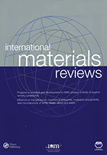
INTERNATIONAL MATERIALS REVIEWS
Elevating Standards in Materials ResearchINTERNATIONAL MATERIALS REVIEWS, published by SAGE Publications Inc, is a leading journal dedicated to the comprehensive analysis of contemporary research in the fields of materials chemistry, mechanical engineering, mechanics of materials, and the study of metals and alloys. With an impressive impact factor and a Q1 ranking across multiple categories such as Materials Chemistry and Mechanical Engineering in 2023, it ranks amongst the top journals for innovative materials research. The journal has a long-standing history since its inception in 1987 and continues to serve as a crucial resource for academics and professionals alike. Although it is not open access, it is renowned for its rigorous peer-review process and its commitment to disseminating high-quality materials science research globally. Researchers, students, and industry professionals benefit greatly from the journal's insightful reviews, both for the advancement of theoretical knowledge and practical applications within the fast-evolving materials field.
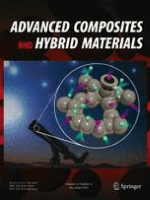
Advanced Composites and Hybrid Materials
Advancing Knowledge in Composite ApplicationsAdvanced Composites and Hybrid Materials, published by SPRINGER NATURE, is a premier journal dedicated to the field of materials science, with a keen focus on innovative composite materials and their applications. With its ISSN 2522-0128 and E-ISSN 2522-0136, the journal has established itself as a cornerstone for researchers and professionals in materials chemistry, ceramics, and polymers, achieving an impressive Q1 ranking across multiple categories in 2023. In particular, it ranks #3 out of 161 in Polymers and Plastics and #4 out of 127 in Ceramics and Composites, highlighting its influential presence within the academic community. The journal aims to provide a cutting-edge platform for the dissemination of groundbreaking research and developments from 2018 to 2024, facilitating knowledge sharing and collaboration among experts. While currently adopting a traditional access model, the significance and impact of research published in this journal cannot be overstated, making it an essential resource for anyone interested in advancing the field of composite materials.

ADVANCED MATERIALS
Exploring the Future of Material DesignAdvanced Materials, published by Wiley-VCH Verlag GmbH, is a premier academic journal that serves as a crucial platform for cutting-edge research in the field of materials science and engineering. With an impressive impact factor and ranking among the top tiers in various categories, including Materials Science, Mechanical Engineering, and Nanoscience, this journal is recognized for its high-quality contributions and relevance to contemporary research challenges. Spanning from 1989 to 2024, Advanced Materials not only features groundbreaking studies but also provides insights into innovative applications and advancements in material design and engineering. Researchers, professionals, and students alike will benefit from the rigorous peer-review process and diverse range of topics covered, making it an indispensable resource for those aiming to stay at the forefront of materials science innovation.

Accounts of Materials Research
Unveiling groundbreaking discoveries in materials science.Accounts of Materials Research is a premier journal published by the American Chemical Society, focusing on the multidimensional field of materials science. With a robust impact factor and a commitment to open-access research, it serves as a vital platform for leading-edge discoveries from 2020 to 2024. The journal has rapidly ascended to the top quartile in multiple categories, including Chemical Engineering, Materials Chemistry, and Polymers and Plastics, demonstrating its significant influence within the academic community. Recognized by Scopus as a key resource—with remarkable rankings that place it in the 95th percentile of its field—Accounts of Materials Research is devoted to publishing high-quality, innovative research that addresses critical challenges in materials development and implementation. This journal is essential for researchers, professionals, and students seeking to stay informed about the latest advancements and collaborative opportunities within the interdisciplinary landscape of materials science.
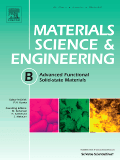
Materials Science and Engineering B-Advanced Functional Solid-State Materials
Connecting Scholars to the Cutting Edge of Materials ScienceMaterials Science and Engineering B: Advanced Functional Solid-State Materials, published by Elsevier, stands as a pivotal platform in the realm of materials science, focusing on the development and characterization of advanced solid-state materials. With an ISSN of 0921-5107 and E-ISSN of 1873-4944, this journal operates out of the United Kingdom and addresses critical issues in condensed matter physics, mechanical engineering, and mechanics of materials. Its consistent recognition, evident in its Q2 quartile rankings across multiple engineering and physics categories and a respectable scope of convergence from 1988 to 2024, signifies its substantial contribution to the field. Researchers and professionals seeking a venue for cutting-edge work will appreciate the journal's commitment to advancing knowledge in functional materials, with its open access features ensuring that innovative findings are readily accessible. Join a community of leading scholars engaging with the latest advancements, shaping the future of materials science.

Frontiers of Materials Science
Fostering Collaboration for Tomorrow's Material SolutionsFrontiers of Materials Science is a groundbreaking journal dedicated to exploring advanced materials and their applications within the ever-evolving landscape of materials science. Published by HIGHER EDUCATION PRESS, this journal offers a crucial platform for scholars and practitioners seeking to disseminate innovative research findings that foster interdisciplinary collaboration. Since its inception in 2011, the journal has enjoyed a notable Q2 ranking in the category of Materials Science (miscellaneous) as of 2023, positioning it among the noteworthy publications in the field with a Scopus rank of #222 out of 463. While predominantly published in China, the journal is committed to open access principles, allowing global accessibility to cutting-edge research. With its comprehensive coverage spanning materials synthesis, characterization, properties, and applications, Frontiers of Materials Science not only serves as a repository for academia but also bridges the gap between research and industry, making it an indispensable resource for researchers, professionals, and students alike.
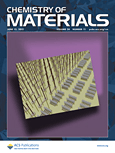
CHEMISTRY OF MATERIALS
Exploring Innovative Pathways in ChemistryChemistry of Materials, published by the American Chemical Society, stands at the forefront of innovative research in the disciplines of chemical engineering, materials science, and chemistry. With an impressive impact factor, this esteemed journal is recognized globally, having achieved Q1 rankings in three significant categories for 2023: Chemical Engineering, Materials Chemistry, and General Chemistry. This positions the journal in the top tier of academic publications, reflecting its influence and rigor in advancing the field. Since its inception in 1989, Chemistry of Materials has been a platform for groundbreaking studies, contributing essential insights and discoveries that shape modern materials science. While currently not an open-access journal, it remains an invaluable resource for researchers, professionals, and students seeking to explore cutting-edge materials research and applications. Its well-curated collection of articles underscores the journal's commitment to enhancing understanding and promoting innovations in material chemistry and its associated fields.
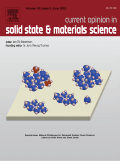
CURRENT OPINION IN SOLID STATE & MATERIALS SCIENCE
Transforming ideas into impactful materials solutions.CURRENT OPINION IN SOLID STATE & MATERIALS SCIENCE, published by Pergamon-Elsevier Science Ltd, is a premier journal in the field of materials science that offers critical insights into the latest advancements and trends in solid-state materials. With an impressive impact factor and a 2023 ranking in the top quartile (Q1) for materials science, this journal provides a platform for researchers, professionals, and students to explore and disseminate high-quality research findings. The journal covers a broad range of topics, encouraging interdisciplinary dialogue among scientists and engineers. While currently not available as open access, its rigorous selection process ensures that only the most impactful and relevant studies are published. Since its inception, CURRENT OPINION IN SOLID STATE & MATERIALS SCIENCE has established itself as an essential resource for anyone involved in the field, facilitating the rapid exchange of knowledge that is vital for advancing material innovations.

Journal of Metals Materials and Minerals
Advancing Knowledge in Metallurgy and Materials ScienceJournal of Metals Materials and Minerals (ISSN: 0857-6149) is a renowned academic publication dedicated to the interdisciplinary fields of metallurgical science, materials engineering, and mineralogy. Published by Chulalongkorn University, Metallurgy & Materials Science Research Institute in Thailand, this journal serves as a pivotal platform for researchers to disseminate their findings and explore innovative applications related to metals, ceramics, polymers, and biomaterials. Although the journal does not currently adopt an open-access model, it provides insightful content that facilitates knowledge sharing among professionals and academics alike. The journal has established its credibility with impressive Scopus ranking percentiles, particularly in categories such as Metals and Alloys and Ceramics and Composites. With an emphasis on advancing the understanding of materials science from 2017 to 2024, the Journal of Metals Materials and Minerals remains an essential resource for those striving to contribute to and stay informed about the latest trends and breakthroughs in these dynamic fields.

JOURNAL OF WUHAN UNIVERSITY OF TECHNOLOGY-MATERIALS SCIENCE EDITION
Advancing Innovation in Materials ScienceJOURNAL OF WUHAN UNIVERSITY OF TECHNOLOGY-MATERIALS SCIENCE EDITION, published by Wuhan University of Technology, stands as a prominent platform for the dissemination of innovative research in the field of Materials Science. With an ISSN of 1000-2413 and an E-ISSN of 1993-0437, this journal is committed to advancing the understanding of material composition, properties, and applications, contributing to the broader scientific community. Since its inception in 1994, the journal has maintained a steady trajectory of growth, culminating in a Q3 category ranking in Materials Science (miscellaneous) for the year 2023, positioning it within the 33rd percentile of its peers in Scopus rankings. By embracing rigorous peer-review standards and encouraging collaborative scholarship, the journal aims to inspire researchers, professionals, and students alike to explore cutting-edge advancements within the field. Although it does not currently operate under an open access model, its wealth of knowledge remains invaluable for those seeking to deepen their understanding of materials science and its transformative impact across various industries.